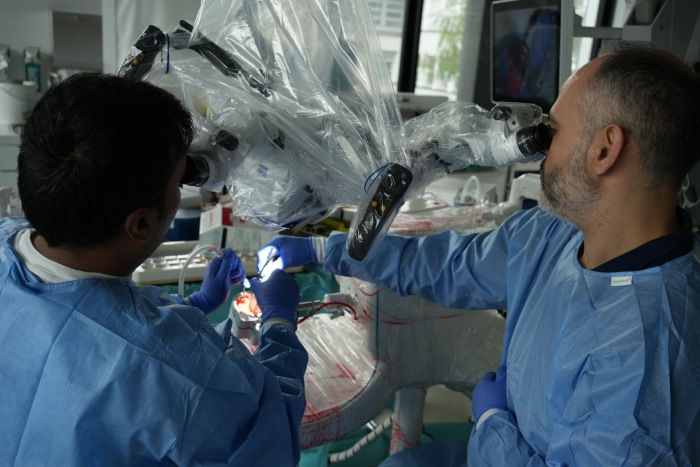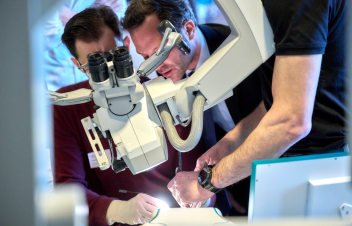How Effective Are Mechanical Thrombectomy Devices in Treating Strokes?
- surgeonslab1
- Jan 30
- 4 min read

Since stroke is still one of the world's top causes of death and disability, prompt and efficient treatment is essential. Among the various treatments available, motorized thrombectomy devices have appeared as a game-changer in the care of sudden ischemic strokes. This article examines how successful these devices are, their use in neurosurgery, and the training that is offered in neurosurgery residency programs to guarantee the best possible results for patients.
Understanding Mechanical Thrombectomy Devices
The brain's blood arteries may be perforated using mechanical thrombectomy devices, which are specialized instruments for this purpose. These devices are often used when a clot stops blood flow, causing harm to brain cells. This is called a sudden ischemic stroke. The main goal of mechanical thrombectomy is to reduce the chances of lasting brain damage by getting blood flowing again as quickly as possible.
The efficacy of these devices has been thoroughly demonstrated in multiple clinical studies. Researchers have shown that mechanical thrombectomy, when performed within a certain time period after stroke symptoms begin, greatly improves outcomes when compared to traditional medical treatment alone. Their effectiveness rests on their capacity to rapidly and effectively eliminate clots, usually in a matter of minutes.
The Procedure: How Mechanical Thrombectomy Works
The mechanical thrombectomy devices process usually includes several steps. To begin, a neuro interventionalist, who is a specialist trained in minimally invasive procedures, makes a tiny incision, typically in the groin, to access the blood veins. A catheter is advanced imaging-guided via the circulatory system to the location of the brain clot.
Once the catheter reaches the clot, the mechanical thrombectomy device is used. There are many kinds of devices, including stent retrievers and aspiration catheters, that are intended to successfully collect and remove clots. The features of the clot and the location frequently determine the equipment to use. Once the clot is removed, blood flow is restored, and the patient is watched attentively for any problems.
The Role of Neurosurgical Simulators in Training
With more people needing skilled neurointerventionalists, successful training programs are becoming increasingly important. Neurosurgical simulations are being used in neurosurgery residency programs to educate future doctors. A neurosurgical simulator provides a realistic environment in which people may practice and improve their abilities in a safe and supervised setting.
Neurosurgery models help students practice different situations, such as using tools to take out blood clots. Practicing these models before treating real patients can help doctors improve their skills, make better decisions, and become more confident. This important hands-on training prepares students for the challenges they will face in real-life medical settings.
The Impact of Mechanical Thrombectomy on Patient Outcomes
The use of motorized thrombectomy devices has greatly helped patients with sudden ischemic stroke. Research shows that individuals who get this medication on time have improved functional independence and reduced disability rates. The capacity to restore blood flow fast may make the difference between complete healing and long-term disability.
Other ways, such as liquid thrombolysis, could make mechanical thrombectomy work even better. This combined approach improves stroke management and increases the chances of a good outcome.
Neuroendovascular Embolization: A Complementary Technique
Besides mechanical thrombectomy, neuroendovascular embolization is also a method used to treat strokes and other blood vessel problems. The goal of this operation is to stop bleeding or decrease blood flow to a particular region by blocking off blood arteries.
Mechanical thrombectomy is a procedure that is used to remove clots, while neuroendovascular embolization is a procedure that may be utilized in circumstances when clots are not the main issue, such as in the treatment of arteriovenous malformations or aneurysms.
Both methods are important in today's neurosurgery, and knowing how they vary and when to use them is important for those who work in neurointervention. By incorporating these procedures into residency programs, future doctors will be better prepared to treat a variety of vascular disorders.
Challenges and Considerations
Even with great progress in mechanical thrombectomy, there are still hurdles to overcome. In underserved or rural locations, access to specialist treatment may be more restricted. Furthermore, not all patients are suitable for this operation. Thus, it is important to carefully choose the patients in order to get the best results.
Furthermore, continued research is critical for refining procedures, improving device designs, and broadening the indications for mechanical thrombectomy. As technology advances, there is a possibility for better ways to treat strokes in the future.
To Sum Up
In short, mechanical thrombectomy devices have improved the treatment of sudden ischemic strokes, giving patients and their families hope. Advanced technology, experienced neurointervention experts, and solid training in neurosurgery ensure these devices are used safely and effectively.
As we continue to search for new ways to treat strokes, providers like SurgeonsLab are important for helping the medical community improve patient care. Mechanical thrombectomy is an essential part of contemporary neurosurgical treatment, and it will continue to play a pivotal role in improving results for stroke patients as a result of the dedication to research, training, and the incorporation of innovative procedures.







